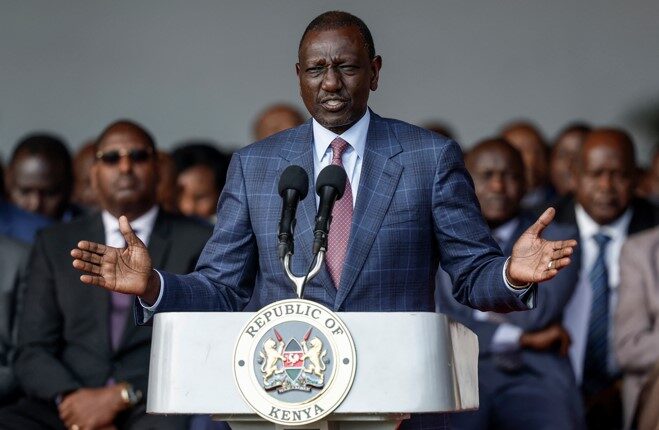Kenyan President William Ruto announced on Thursday, July 11, the dismissal of almost his entire cabinet and consultations to form a “broad-based government” following widespread anti-government protests.
He stated:
“I have decided on the dismissals upon reflection, listening keenly to what the people of Kenya have said and after a holistic appraisal of the performance of my cabinet and its achievements and challenges.”
This drastic move comes after weeks of protests that escalated into violence, including an incident on June 25 where protesters stormed parliament in Nairobi, leaving parts of the building ablaze.
The protests, led largely by young, Gen-Z Kenyans, have broadened into a campaign against Ruto’s government, fueled by anger over proposed tax hikes and allegations of government corruption.
In response to economic pressures and a downgrade of Kenya’s debt rating by Moody’s, Ruto announced austerity measures and cuts to government spending on July 4, 2024.
So far, the crisis has affected Kenya’s economic metrics, with public debt standing at approximately 10 trillion Kenyan shillings ($78 billion), equivalent to around 70% of Kenya’s GDP. Moody’s downgraded Kenya’s debt rating further into junk territory to Caa1 with a negative outlook, citing Ruto’s administration’s challenges in fiscal management and debt reduction.
Key figures involved in the protests and government responses include Deputy President Rigathi Gachagua, Prime Cabinet Secretary and Foreign Minister Musalia Mudavadi, and former Defense Minister Aden Duale, who thanked Ruto and the people of Kenya for the opportunity to serve in a social media post following his dismissal



